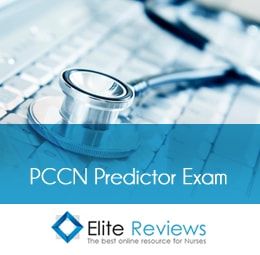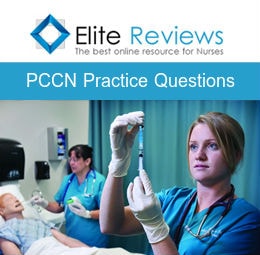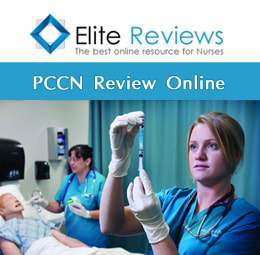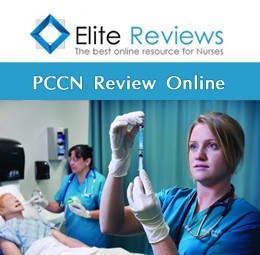PCCN Hematology Exam Overview
PCCN Hematology Exam Overview
The PCCN Exam outline includes a host of content that will be included on the national exam. Including but not limited to Hematology. The Hematology section of the PCCN exam will include roughly 5 to 8 questions. Although this section does not account for a large percentage of the exam, it would be wise to try and answer all of the questions in the section appropriately so as to give yourself a better chance in other areas. In this article we will cover the outline of the Hematology section, an overview of Hematology (broad), and some PCCN Hematology practice questions with rationales.
Hematology Outline
- Blood Products and Plasma
- HIV, AIDS, Neoplasms
- Life Threatening Coagulopathies
- Organ Transplantation
- Sickle Cell Crisis (Trait, Anemia)
Hematology Overview
Hematology is the branch of medicine concerned with the study, diagnosis, treatment, and prevention of diseases related to blood. Hematology involves treating diseases that affect the production of blood and its components, such as blood cells, hemoglobin, blood proteins, bone marrow, platelets, blood vessels, spleen, and the mechanism of coagulation. Hematologists also conduct studies in oncology and work with oncologists.
Sickle Cell Anemia
Sickle Cell Anemia is an inherited form of anemia; a condition in which there aren’t enough healthy red blood cells to carry adequate oxygen throughout your body. Normally, your red blood cells are flexible and round, moving easily through your blood vessels. In sickle cell anemia, the red blood cells become rigid and sticky and are shaped like sickles or crescent moons. These irregularly shaped cells can get stuck in small blood vessels, which can slow or block flow and oxygen to parts of the body. There’s no cure for most people with sickle cell anemia. However, treatments can relieve pain and help prevent further problems associated with sickle cell anemia.
Sickle Cell Anemia S/S
Signs and symptoms of sickle cell anemia often don’t appear until an infant is at least 4 months old and may include; anemia, episodes of pain, hand foot syndrome, frequent infections, delayed growth, and vision problems.
Sickle Cell Anemia Causes
Sickle cell anemia is caused by a mutation in the gene that tells your body to make hemoglobin; the red, iron rich compound that gives blood its red color. Hemoglobin allows red blood cells to carry oxygen from your lungs to all parts of your body. In sickle cell anemia, the abnormal hemoglobin causes red blood cells to become rigid, and sticky. The sickle cell gene is passed from generation to generation in a pattern of inheritance called autosomal recessive inheritance. This means that both the mother and father must pass on the defective form of the gene for a child to be affected. With each pregnancy, two people with sickle cell traits have: a 25% chance of having an unaffected child with normal hemoglobin; a 50% chance of having a child who also is a carrier; and a 25 % chance of having a child with sickle cell anemia. The risk of inheriting sickle cell anemia comes down to genetics. For a baby to be born with sickle cell anemia, both parents must carry a sickle cell gene. Sickle cell anemia most commonly affects African Americans.
Sickle Cell Anemia Complications
Sickle cell anemia can lead to a host of complications, including; stroke, acute chest syndrome, pulmonary hypertension, organ damage, blindness, skin ulcers, gallstones and priapism. Treatment is aimed at treating the signs and symptoms.
PCCN Hematology Practice Questions
1) In the early stages of idiopathic thrombocytopenic purpura, (ITP), nursing interventions primarily focus on
A) Maintaining a patent airway
B) Controlling the respiratory rate
C) Replenishing circulating blood volume
D) Coping with alterations in body image
2) A patient with neutropenia has been placed in protective isolation. When providing care for this patient, it is important the nurse keeps in mind that the most common source of infection in immunocompromised patients is
A) Hospital equipment contaminated with pathogens
B) Poorly cleansed hands of health care workers
C) Normal flora and fauna from the patient’s body
D) Family members coughing or sneezing on the patient
3) A patient experiencing renal transplantation has been having an unremarkable recovery over the previous 4 days. Which of the following findings would the nurse need to report to the physician immediately?
A) Abdominal discomfort and bladder distention
B) Increasing urinary output with decreasing serum creatinine
C) RUQ tenderness with elevated serum bilirubin
D) Elevated glucose and decreasing LOC
4) A patient about to receive a bone marrow transplant is in strict isolation and expressing feelings of anxiety. Nursing measures appropriate to this situation include
A) Playing music the patient enjoys and allowing photographs at the bedside
B) Allowing the patient’s cat to visit for a pet therapy session
C) Encouraging the patient’s school aged grandchildren to visit
D) Asking family members to bring in fresh produce as comfort food
5) A patient with HIV/AIDS is admitted complaining of weakness, weight loss of 25 pounds over the past month, fever, chills, and diarrhea. The patient’s CD 4 count is 40. While taking the admission history, the nurse learns that the patient has two pet cats and a parrot. Which of the following opportunistic pathogens could be contributing to this patient’s current clinical picture?
A) Pneumocystis carini
B) Cryptococcus
C) Toxoplasmosis
D) Mycobacterium avium
PCCN Hematology Practice Questions Answer with Rationale
1) Correct Answer – C) Replenishing circulating blood volume
- Rationale – ITP is a deficiency of platelets with measurable amounts of antiplatelets antibodies resulting in bleeding into the skin and other organs. Acute ITP is generally a disease that affects children, while chronic ITP is generally experienced by adolescents and adults. Because of blood loss, replacing circulating blood volume is the primary goal when managing patients with ITP.
2) Correct Answer – C) Normal flora and fauna from the patient’s body
- Rationale – As the patient’s natural immunity declines, his or her own normal body flora and fauna become the major source of opportunistic infections. While all of the other choices may contribute to the development of illness, they pose danger to the patient transiently and episodically rather than continually.
3) Correct Answer – A) Abdominal discomfort and bladder distention
- Rationale – Abdominal discomfort and bladder distention indicate urinary tract obstruction, which could progress to renal transplant graft failure. An increase in urinary output and decreasing serum creatinine indicate improved renal function.
4) Correct Answer – A) Playing music the patient enjoys and allowing photographs at the bedside
- Rationale – Allowing the patient to have things that make him or her feel more at home helps to reduce anxiety. Cats tend to carry many pathogens, owing to their bathing habits and litter box use, that could become opportunistic for this patient.
5) Correct Answer – D) Mycobacterium avium
- Rationale – The symptoms evidenced (diarrhea, weight loss, fever with chills, and weakness) as well as contact with birds suggest the likelihood of Mycobacterium avium infection.
PCCN National Exam Courses
Overview
- Elite Reviews Offers A Variety Of Online Courses That Will More Than Adequately Help Prepare The Critical Care Nurse To Pass The National Exam.
- Each Course Includes Continuing Education Credit and Sample Questions.
Continuing Education
- Each Of Our Online Courses Has Been Approved Continuing Education Contact Hours by the California Board of Nursing
- Login To Your Account In Order To Access The Course Completion Certificate Once The Course Is Complete.
PCCN Free Trial
- FREE Sample Lecture & Practice Questions
- Available For 24 Hrs After Registration
- Click The Free Trial Link To Get Started – PCCN Free Trial
How It Works
How The Course Works
- First – Purchase The Course By Clicking On The Blue Add To Cart Button – You Will Then Be Prompted To Create A User Account.
- Second – After Creating An Account, All 3 Options (90, 120 or 150 Days) Will Be Listed. Select The Option You Desire And Delete The Other Two.
- Third – You Will Be Prompted To Pay For The Review Using PayPal – After Payment You Will Be Redirected Back To Your Account.
- Last – Click The Start Button Located Within Your Account To Begin The Program
- 125 Prep Questions
- Q & A With Rationales
- Approved For 5 CEU’s
- 90 Days Availability
- Cost $75.00
- 1250+ Prep Questions
- Q & A With Rationales
- Approved For 25 CEU’s
- 90 Days Availability
- Cost $200.00
PCCN Practice Questions Bundle
- 1350+ Prep Questions
- Q & A With Rationales
- Approved For 30 CEU’s
- 90 Days Availability
- Cost $225.00
PCCN Review Course
- Option 1
- Lectures & 1250+ Questions
- Q & A With Rationales
- Approved For 35 CEU’s
- 90 Days Availability
- Cost $275.00
- Option 2
- Lectures & 2000+ Questions
- Q & A With Rationales
- Approved For 40 CEU’s
- 90 Days Availability
- Cost $325.00
PCCN Review Course Bundle
- Option 3
- Lectures & 3000+ Questions
- Q & A With Rationales
- Approved For 70 CEU’s
- 90 Days Availability
- Cost $375.00







